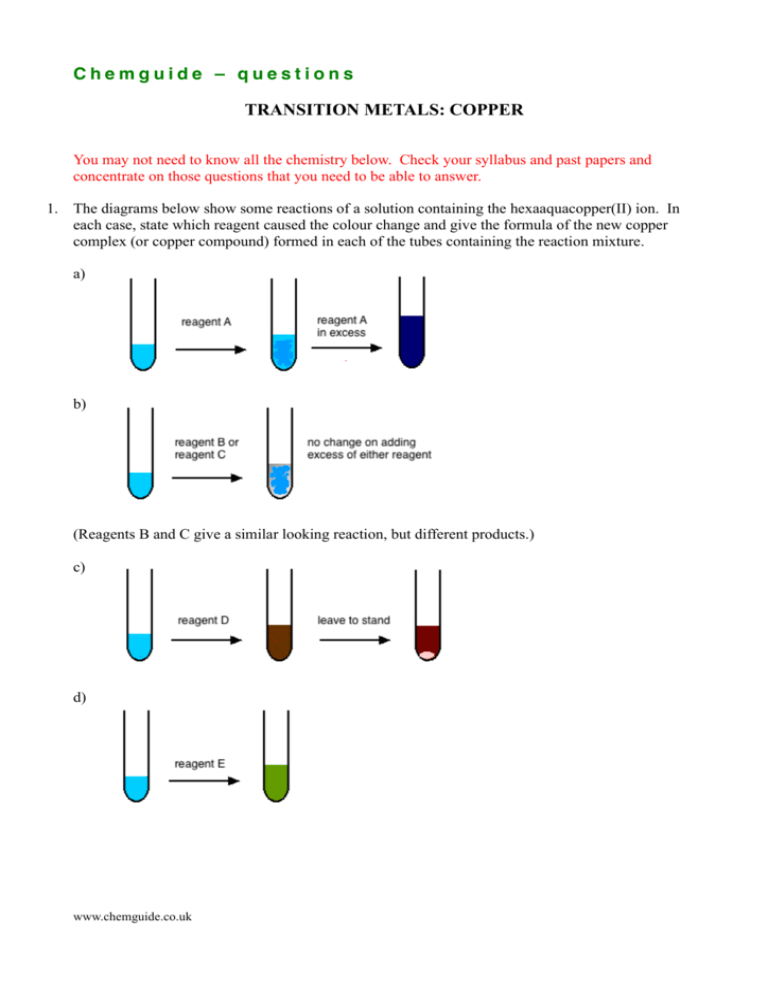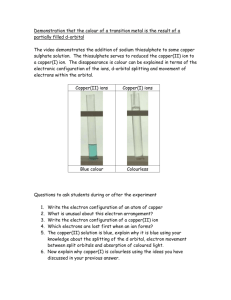questions on copper
advertisement

Chemguide – questions TRANSITION METALS: COPPER You may not need to know all the chemistry below. Check your syllabus and past papers and concentrate on those questions that you need to be able to answer. 1. The diagrams below show some reactions of a solution containing the hexaaquacopper(II) ion. In each case, state which reagent caused the colour change and give the formula of the new copper complex (or copper compound) formed in each of the tubes containing the reaction mixture. a) b) (Reagents B and C give a similar looking reaction, but different products.) c) d) www.chemguide.co.uk Chemguide – questions 2. a) Copper(II) sulphate solution reacts with potassium iodide solution to produce a precipitate of copper(I) iodide. The ionic equation for the reaction is 2CuI(s) + I2(aq) 2Cu2+(aq) + 4I-(aq) What sort of reaction is this? Explain your answer. b) The formation of the iodine in the above reaction can be used as a way of finding the concentration of a solution containing copper(II) ions. The amount of iodine formed can be found by titration with standard sodium thiosulphate solution. 2S2O32-(aq) + I2(aq) S4O62-(aq) + 2I-(aq) 25 cm3 of copper(II) sulphate solution of unknown concentration was pipetted into a flask and an excess of potassium iodide solution was added. 0.100 mol dm-3 sodium thiosulphate solution was run in until the colour of the iodine had faded to a pale yellow, and then some starch solution was added to give a deep blue colour. More sodium thiosulphate solution was run in slowly until the blue colour disappeared. 22.5 cm3 was required. (i) Calculate the number of moles of sodium thiosulphate present in the 22.5 cm3. (ii) By looking at the equations, how many moles of copper(II) ions must have been present in the 25 cm3 of copper(II) sulphate solution? (iii) Calculate the concentration of the copper(II) sulphate solution in mol dm-3. 3. a) Copper(I) iodide and copper(I) chloride can both be prepared in the lab – copper(I) iodide using the reaction in question 2. However copper(I) sulphate can't be prepared by, for example, reacting copper(I) oxide with dilute sulphuric acid. Explain why this is. b) Copper(I) chloride can be formed by the reaction of copper(I) oxide with an excess of concentrated hydrochloric acid. (i) In the first instance, a copper complex is formed. Write its formula. (ii) How is this copper complex converted into copper(I) chloride? www.chemguide.co.uk





